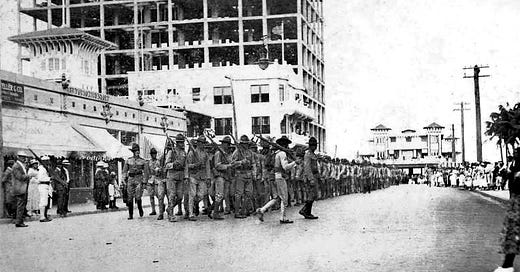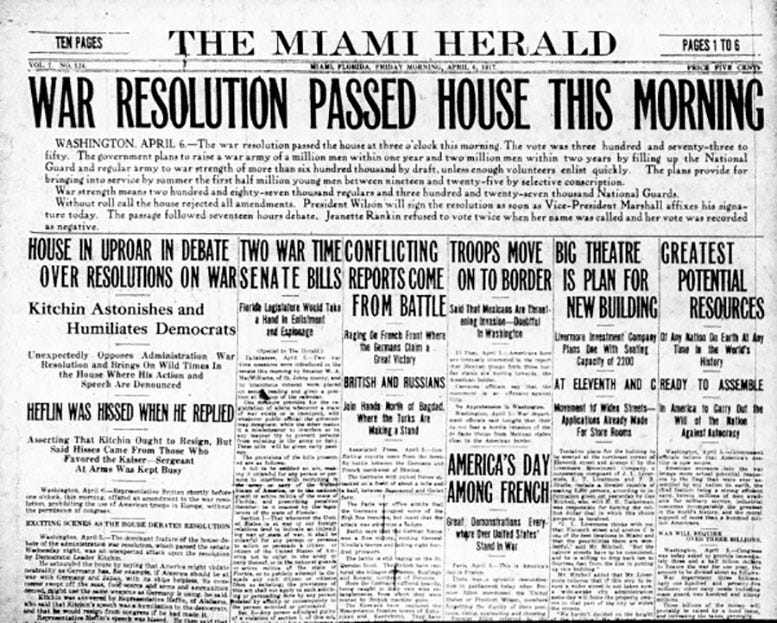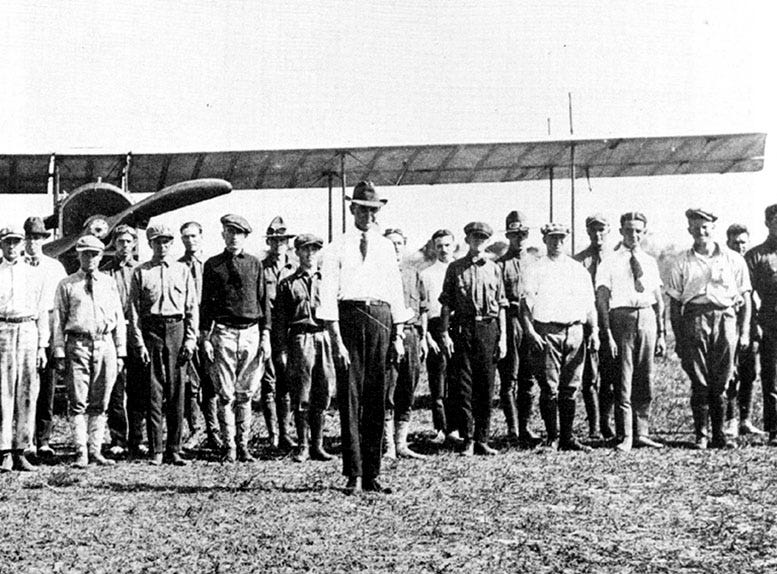Armistice Day in Miami (1918)
The story of how the end of World War I, referred to as Armistice Day, was received and celebrated in Miami on November 11, 1918. The remembrance of this day is now Veteran's Day in the United States.
Miami residents woke up to a perfect fall day on Monday, November 11, 1918, as they prepared for the start of a new week. The low in the morning was sixty-eight degrees and the day would top off at eighty-degrees with low humidity and plenty of sunshine. However, people around the world were still living under the cloud of war taking place in Europe. The United States entered World War I, also known as the Great War, more than a year and half earlier, and its citizens were anxious for the war to come to a victorious conclusion.
Given the sacrifice all Americans were making, everyone was ready to move on from a conflict that seemed so far away. Miamians were no different. Although the city and region benefited from the increase in tourism due to the conflict in Europe, South Floridians were ready for good news. On a beautiful Monday morning in November, they would get that news.
Flight School & Air Stations
Although the Great War officially began in Europe on Miami’s birthday (July 28), in 1914, the United States did not enter the war until Congress passed a war resolution on April 6, 1917. The State of Florida would play a prominent role in preparing soldiers for battle in Europe. In particular, the state became host of several air fields used to train pilots for the war effort.
After war was declared, the United States Congress appropriated funds to establish flight schools throughout the country. In November of 1917, Glenn Curtiss identified a location on Miami Beach for a hydro-airplane school and a second location in the Everglades for a land-based flight field. Curtiss’ plan was to have the largest Army aviation school in the country.
He originally leased land from the Bright Brothers for his land-based training school. The property for the school later became part of the future city of Hialeah. Within a year of opening the school, he moved it to fifty acres of land he purchased just north of the Miami Canal.
In Coconut Grove, the Navy took over Dinner Key and established the U.S. Naval Air Station in 1917. They filled in the key and built a training facility to teach naval airmen how to fly hydro-planes. The facility closed shortly after the conclusion of the war due to complaints from Coconut Grove residents.
Dinner Key was used as a commercial airport until the Second World War when it was once again commandeered by the Navy. Just prior to and then after the war, Pan American Airlines operated out of Dinner Key until they moved to Miami International Airport. The former main terminal building for Pan American is now used as Miami City Hall.
The United States Coast Guard established their Air Station on Dinner Key more than a decade after World War I. The station operated in Coconut Grove from 1932 until 1965, when it moved to the Opa-Locka Airport. The former barracks, mess hall and hangar were all later added to U.S. Register of National Historic Places.
Chapman Field opened in late summer of 1918. It was named for the first American pilot killed during World War 1, Victor Chapman. It was used briefly as a target range by army pilots flying bi-planes to practice aerial gunnery. However, the war ended shortly after the base got up and running. The land was given to the Department of Agriculture after the war, and it was where David Fairchild introduced new plants and trees to the country. It was the replacement for the experimental station that was in Brickell from 1898 until the early 1920s. The land is now part of a 483-acre park called Chapman Field Park at 13601 Old Cutler Road.
Keep reading with a 7-day free trial
Subscribe to Miami History to keep reading this post and get 7 days of free access to the full post archives.






